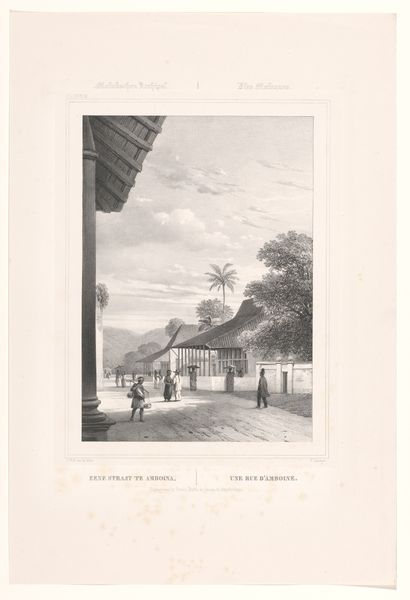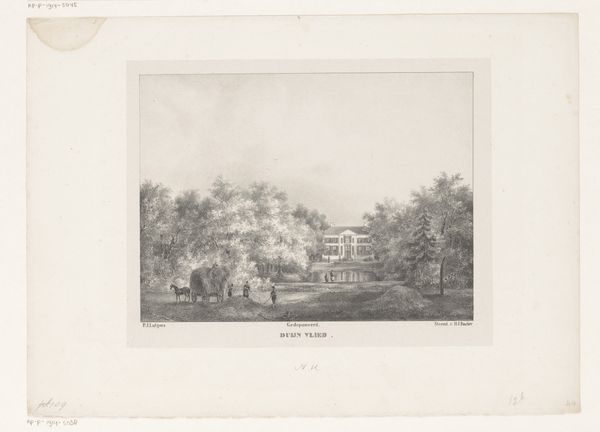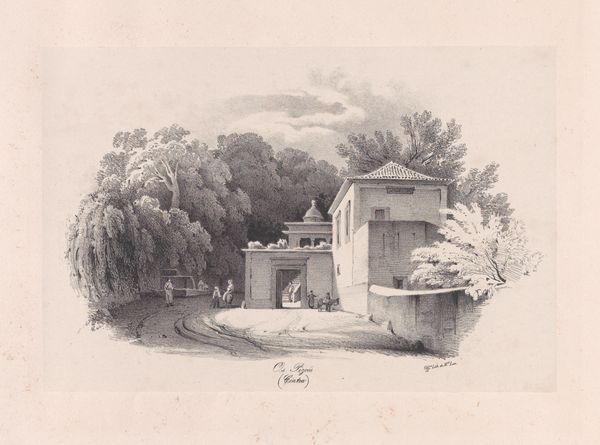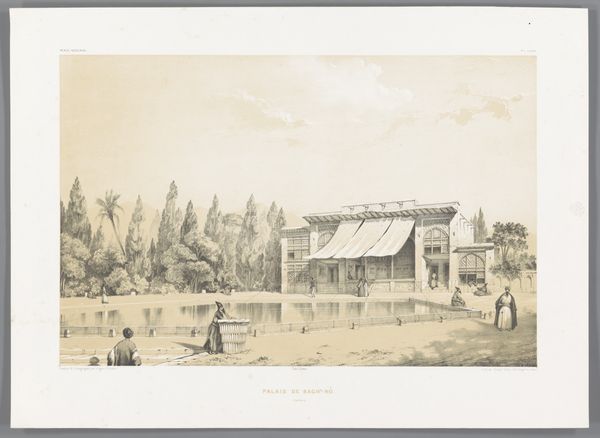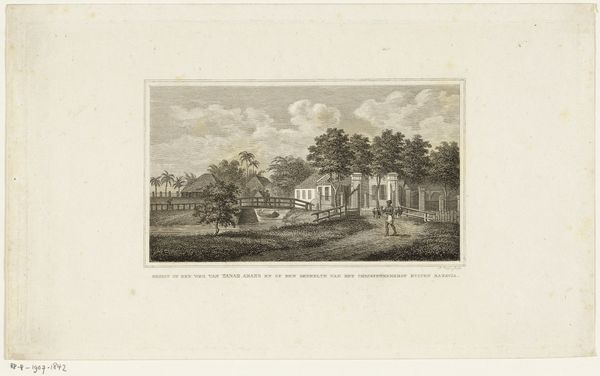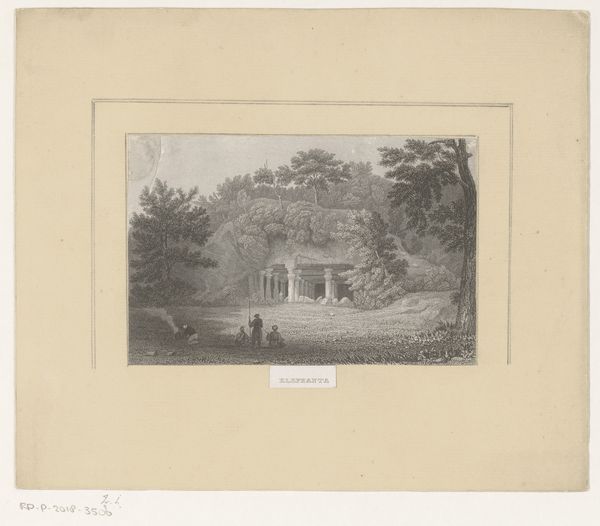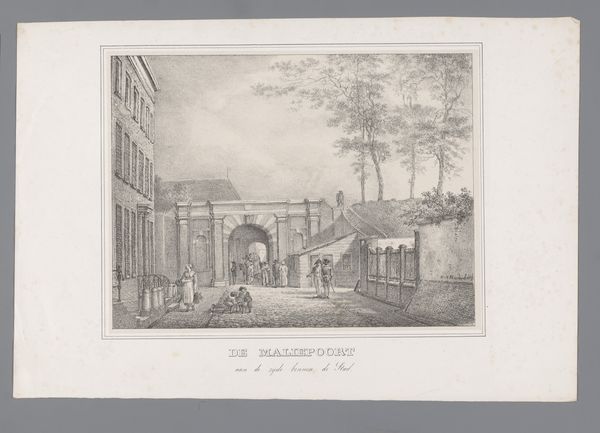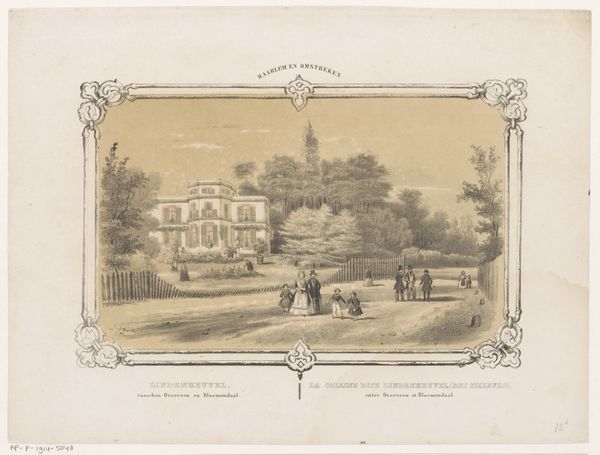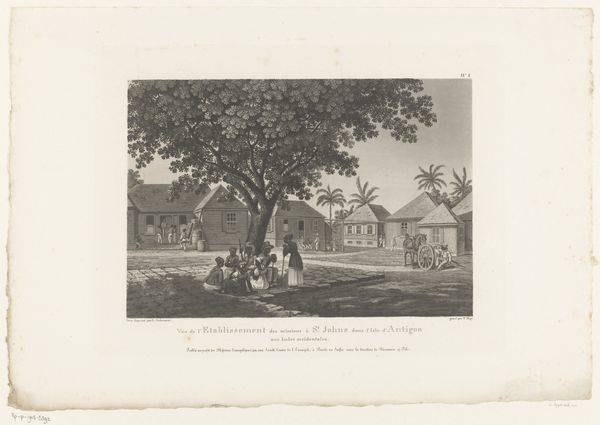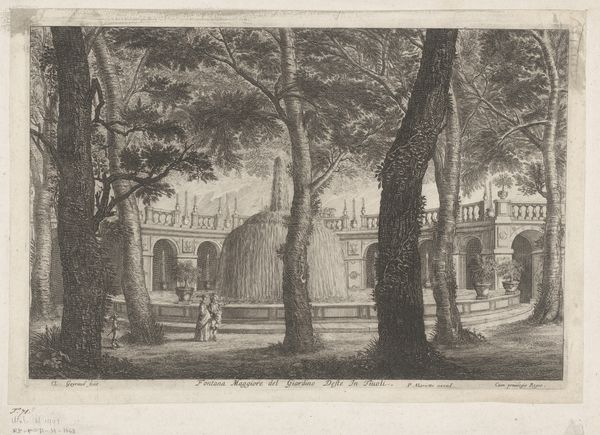
print, engraving
# print
#
landscape
#
historical photography
#
orientalism
#
genre-painting
#
engraving
Dimensions: height 345 mm, width 510 mm
Copyright: Rijks Museum: Open Domain
Curator: Paulus Lauters created this engraving titled "Woning van een Europeaan op Batavia," or "A European House in Batavia," between 1843 and 1845. It depicts a stately, classical-style home in what is now Jakarta. Editor: My first impression is one of stark clarity. The monochrome palette accentuates the geometry of the house. The lines are so clean and precise; the architectural elements pop, creating a harmonious whole. Curator: What’s compelling is thinking about the physical labor behind such a precisely rendered image. This wasn’t just Lauters working at his desk; there were likely collaborations, apprenticeships, and a whole economic structure supporting the production and distribution of such prints that speak to European ideas of power and authority. Editor: Agreed, the composition is undeniably hierarchical. The eye is drawn to the centered house, the figures in the foreground acting as repoussoir elements. It's like a stage setting emphasizing this colonial residence as a point of centrality and domination, but even so the balance achieved across the pictorial surface produces a feeling of detached elegance. Curator: Indeed, even the choice of engraving as a medium is telling. Printmaking made it possible to reproduce and circulate such images widely, reinforcing a specific vision of colonial life across Europe, shaping perception, trade, and inevitably the colonial endeavor in Southeast Asia. Editor: And while the composition creates a feeling of formality and grand order, the monochromatic scheme simplifies all elements down to an underlying essence. There are almost no gray values – simply black or white or gradations in between; by employing such a contrast ratio he gives form to the space inhabited, emphasizing it as a built environment, more than something pastoral. Curator: Exactly! It's a testament to the intricate connections between artistic production, colonial ambitions, and the shaping of social consciousness. Editor: Looking at this print, I see a compelling intersection of formal elegance and socio-historical context; thanks for the illuminating details that give the piece even greater meaning.
Comments
No comments
Be the first to comment and join the conversation on the ultimate creative platform.

